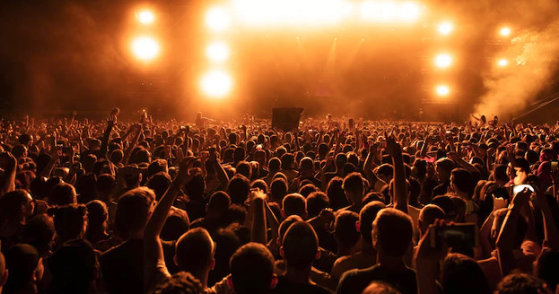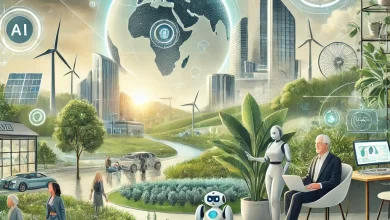
Event attendees’ demands and expectations are becoming more sophisticated and almost unpredictable.
As a result, event organizers constantly look for efficient ways to meet these seemingly insatiable demands.
Using the latest event technologies for conferences and other similar events is one way to ensure that event production runs smoothly and that attendees are completely satisfied.
If you’re having trouble determining which event technology is best for your event production needs, don’t worry because we’ve got you covered.
Here is a list of trending event technologies to add to your checklist this year and beyond to spruce up your events.
Upcoming Trends In Event Technology
Speed Up The Process With RFID
RFID, or Radio Frequency Identification, is a low-cost technology used at events to store attendee information.
This enables events to personalize attendees’ experiences by reviewing their patterns at the event, seeing what they interacted with, and immediately notifying exhibitors when interested attendees enter their booth.
Gathering behavioral data is a critical component of organizing a successful event. You can create customer avatars and send targeted messaging using RFID to collect attendee data.
RFID can assist you in providing a quality customer experience while incurring minimal overhead costs.
Augmented Reality And Virtual Reality
The benefits of augmented and virtual reality for event management are numerous, ranging from assisting you in creating realistic scenarios, improving retention and recall, and providing safe and controlled areas for events.
This event technology has raised the bar regarding fun and innovation in event production.
This technology, also known as “immersive multimedia,” allows you to transport your attendees to different locations without them leaving their homes or offices.

Attendees no longer need to be physically present to participate in meetings or conferences due to their high level of engagement and 360-degree immersiveness.
They can interact with other participants and contribute remotely while feeling like they are in the same room as everyone else.
Fortunately, augmented reality (AR) and virtual reality (VR) are simple to integrate into event management.
In most cases, you must encourage attendees to use their mobile devices to experience AR, and you’re good to go.
Digital Floor Plans & Event Programming
Just as architects and other construction professionals use blueprints to design and build functional homes, event organizers now use similar technology (event diagramming software) to generate 3D renderings of event spaces.
This amazing event technology includes drag-and-drop functionality, seating layouts, and stage designs. That is not all. It also includes 3D walk-through and booth mapping features.
This makes it incredibly simple for event organizers to set up workstations, booths, and exhibition points quickly.
Other event apps with floor plans include interactive interphase, which enables guests to click on any room of their choice and get real-time information on what’s going on in that room.
They are given information such as the topic under discussion and the speaker’s name.
Customized Event Apps
Apps have always been crucial in the deployment of event technologies. Event organizers have turned to them as a solution to challenges that trail event production or management due to their flexibility and diverse applications.
Event organizers can use personalized apps to display information about their events, such as venue maps, speaker information, promotion announcements, live streaming links, and other useful information, at any time.
Interestingly, these apps can facilitate networking meetings because they include chat features.
They also include polling functionality and Q&A sections where attendees can provide feedback. Attendees can also use this medium to connect with event sponsors and speakers.
Contactless Check-In
Even though hybrid and in-person events are making a big comeback in 2023, event planners will have to wait a while before hosting large groups of people at events.
Given the widespread concern about the health risks of having too many people gathered in one place, one logical way to alleviate tension is to install contactless check-in systems at event venues.
These systems aid in the elimination of queues and the reduction of physical contact at events, thereby ensuring physical separation. This event technology is simple to set up and inexpensive to implement.
The event technology company provides check-in booths, and attendees only need to scan a QR Code with their phone once they arrive at the event location.
The software then sends the attendee’s information to a nearby printer for a quick badge pickup.
While this technology is praised in the event industry for improving health and safety measures, it has also been shown to be much faster and less stressful than traditional check-in methods.
Twitter Wall
Any event is incomplete without a good round of publicity on social media and nowadays, event planners understand the vitality of starting with event promotions well in advance.
This promotion can include branded content, influencer content, content created by fans or hosts of the event. Event planners can get the maximum benefit with a Twitter wall for events.

They can display the content which was created before the event on Twitter via hashtags, user handles or user mentions.
Or you can create a unique Twitter wall for events by adding or filtering out content, customizing the feed with patterns and changing the style and the layout according to your liking.
A Twitter wall at your event can be an excellent way to boost event visibility and even generate in-event audience engagement – the two mandatory components for a successful event.
Wrapping Up!
If you want to stay competitive and run events that are cutting-edge in the industry, you should incorporate technology into the process. Technology can transform an ordinary event into a memorable and exciting experience that will keep people returning for more.



